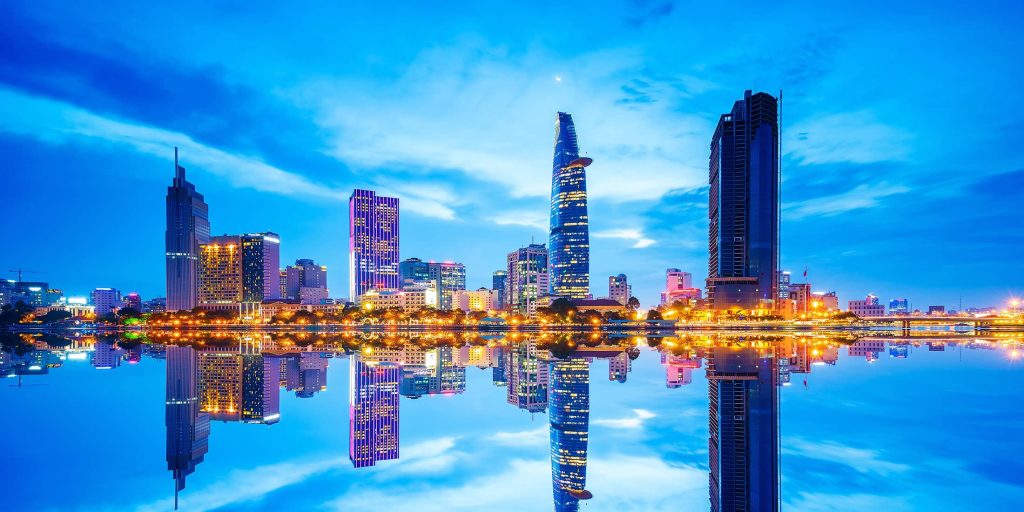Tuesday, April 16, 2024

Vietnam’s Reunification Day, celebrated annually on April 30, marks the end of the Vietnam War and the unification of North and South Vietnam in 1975. This historic day, laden with deep national pride and remembrance, also serves as a significant catalyst for the travel industry, providing a substantial boost to both domestic and international tourism. As one of the country’s major public holidays, it not only offers a time for reflection and celebration but also becomes a peak time for travel and tourism industry, driven by a vibrant array of events and activities across the nation.
The Impact of Reunification Day on Domestic Travel
Reunification Day is part of a broader holiday period, often linked with the International Labor Day on May 1. This extended holiday encourages Vietnamese citizens to explore their homeland, benefitting local economies and the domestic travel sector immensely. During this time, families and friends often plan vacations, and travel companies offer special packages and discounts to attract tourists to various destinations like Da Nang, Hanoi, Ho Chi Minh City, and the increasingly popular Phu Quoc Island.
Transportation services, including airlines and railways, usually ramp up their operations to accommodate the surge in travelers. For instance, Vietnam Railways often adds additional train services during this period, and airlines like Vietnam Airlines and VietJet Air typically increase their flight frequencies to handle the holiday rush. These transportation networks play a crucial role in facilitating travel and ensuring that tourists can reach their destinations efficiently during the busy season.

Boost to International Tourism
Reunification Day also has a significant impact on international tourism in Vietnam. Tourists from around the world are drawn to Vietnam during this period to witness the country’s rich cultural heritage and participate in the celebrations. Major cities showcase elaborate fireworks, military parades, and public displays of dance and music that highlight Vietnam’s culture and history.
International visitors often use this opportunity to explore beyond the main festivities in urban centers, venturing into rural areas, coastal regions, and cultural sites. Tour operators capitalize on this influx by organizing guided tours that cover historical landmarks related to the Vietnam War and other attractions that offer insights into Vietnam’s diverse cultural tapestry.
Cultural Festivities and Events
One of the most significant aspects of Reunification Day is the array of cultural festivities that take place. In Ho Chi Minh City, formerly known as Saigon, the day is commemorated with various cultural performances, exhibitions, and remembrance ceremonies at significant historical sites like the Reunification Palace, where the North Vietnamese tank crashed through the gates in 1975, officially marking the end of the war.
In Hanoi, the capital, the celebrations are equally vibrant, with streets decorated with flags and banners, and locals participating in parades and public concerts. These festivities not only serve as a draw for tourists but also enhance the communal spirit and pride among the Vietnamese people.

Economic Impact on the Travel Industry
The economic impact of Reunification Day on Vietnam’s travel industry cannot be understated. Hotels, resorts, and other accommodations often see a significant spike in bookings during this period. The increased demand drives up prices, yet occupancy rates remain high, indicating the strong pull of the holiday. Local businesses, including restaurants, shops, and entertainment venues, also benefit from the increased foot traffic, contributing to the overall economic vitality of the tourism sector.
Moreover, this holiday period prompts an uptick in employment opportunities in the tourism sector. Additional staff are often needed to handle the surge in tourists, providing temporary jobs in various capacities, from hotel service to tour guides.
Challenges and Opportunities
Despite the benefits, the surge in travel during Reunification Day can also pose challenges. These include overcrowding at major tourist sites, increased prices, and the environmental impact of heightened travel activities. Addressing these challenges requires careful planning and management by both government and private sectors to ensure sustainable tourism practices that can handle peak tourist periods without degrading the experience or the environment.
Vietnam’s Reunification Day is much more than a historical commemoration; it is a powerful driver for the travel industry, promoting both domestic and international tourism. As Vietnam continues to develop its tourism infrastructure and services, this holiday provides a vital opportunity to showcase the country’s rich heritage and vibrant culture. For the travel industry, it is a period of both opportunity and challenge, requiring innovative approaches to tourism management and marketing to fully capitalize on the potential benefits while mitigating the associated challenges. The ongoing success of this holiday period in boosting tourism is a testament to Vietnam’s growing appeal as a global travel destination, fueled by its deep cultural roots and historical significance.
Monday, April 29, 2024
Monday, April 29, 2024
Tuesday, April 30, 2024
Monday, April 29, 2024